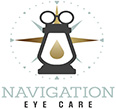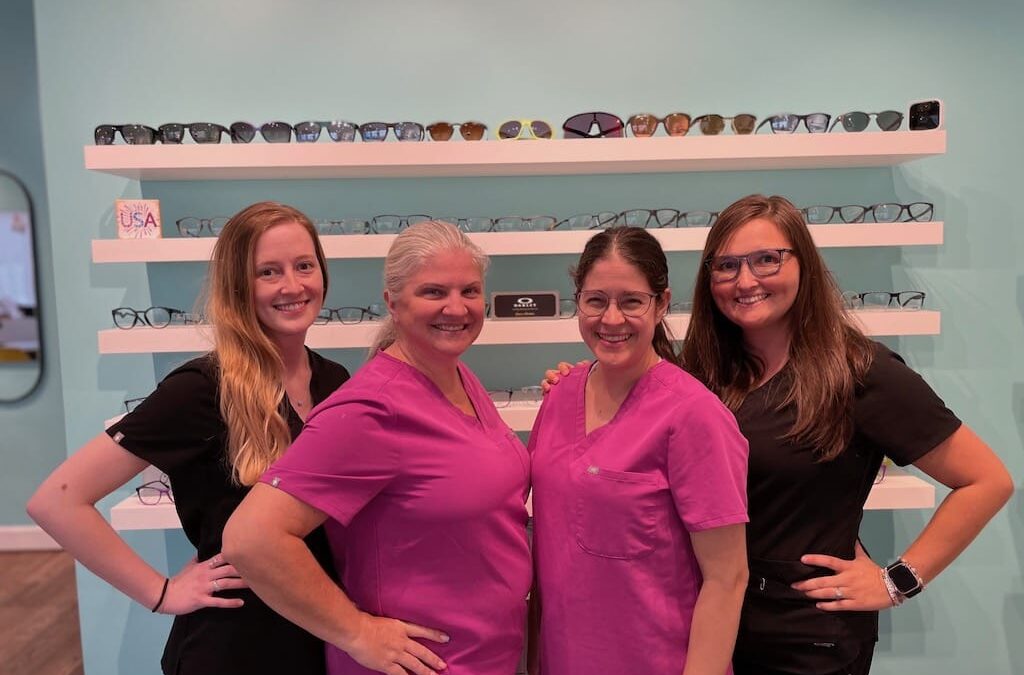The Digital Playroom: Balancing Screen Time with Healthy Vision for Kids
In today’s digital age, children are growing up in a world where screens are ubiquitous. From educational apps to captivating cartoons, screens have become an integral part of their daily lives. But with the rise in screen time comes concerns about its impact on children’s vision. Navigation Eye Care’s Optometrist Chesapeake VA takes a closer look at this modern dilemma and offers insights into maintaining a harmonious balance.
The Screen Revolution: Navigating the Digital Landscape
Screens have revolutionized the way children learn and play. Interactive games and virtual lessons can engage young minds in ways that traditional methods might not. However, as screens become increasingly prevalent, it’s essential to strike a balance that nurtures both the advantages of technology and the wellbeing of a child’s eyes.
Understanding the Impact: Screen Time and Vision Health
The glow of screens is mesmerizing, but prolonged exposure can take a toll on developing eyes. Staring at screens for extended periods can lead to digital eye strain, a condition characterized by symptoms like dry eyes, headaches, and blurred vision. The blue light emitted by screens has also been linked to disruptions in sleep patterns and potential long-term effects on eye health.
This is where guidance from Navigation Eye Care’s experienced team and Optometrist Chesapeake VA comes into play. Regular eye check-ups can help monitor any changes in a child’s vision and provide strategies to mitigate the effects of excessive screen time.
Playtime, Balanced: Tips for Healthy Screen Time
The goal isn’t to eliminate screens from a child’s life, but to create a balanced digital playroom that promotes healthy vision. Here are some tips to consider:
1. The 20-20-20 Rule: Encourage your child to follow the 20-20-20 rule – for every 20 minutes of screen time, take a 20-second break and focus on something 20 feet away. This simple practice can help alleviate eye strain.
2. Outdoor Adventures: Balance screen time with outdoor activities. Spending time in natural light not only promotes physical activity but also benefits vision health.
3. Opt for Quality Content: Choose educational and age-appropriate content that engages and stimulates without overstraining the eyes.
4. Setting Screen Limits: Establish screen time limits that are suitable for your child’s age and developmental stage. This helps prevent excessive exposure.
5. Create a Screen-friendly Environment: Adjust screen brightness, font size, and contrast to make viewing more comfortable. Dimming lights in the room can also reduce glare.
Nurturing Future Vision: Early Intervention and Care
Early intervention is key to maintaining healthy vision in the digital age. Regular eye check-ups with Navigation Eye Care’s own Optometrist Chesapeake VA can detect any issues early on and provide tailored recommendations. They can also offer insights into the appropriate amount of screen time based on your child’s individual needs.
Parental Role: Model Behavior and Communication
As parents, we are our children’s first role models. Demonstrating healthy screen habits not only benefits our own wellbeing but also sets an example for our kids. Communication is equally crucial. Have open conversations about the effects of screen time and the importance of balance. Empower your child to be mindful of their eyes and body as they explore the digital world.
The Balance Blueprint
In the digital playroom, balance is the blueprint for healthy vision. Screens can be windows to a world of knowledge and creativity, but like any tool, they require careful and conscious use. By incorporating these strategies and seeking guidance from Navigation Eye Care’s pediatric eye doctor and experienced Optometrist Chesapeake VA, we can ensure that our children’s digital experiences enhance their learning journey without compromising their precious eyesight.
Beyond the Classroom: Supporting Visual Development for Homeschooled Children
Homeschooling opens up a world of possibilities for tailoring education to a child’s individual needs and interests. As parents take on the role of educators, they embark on a journey that goes beyond traditional classroom walls. But in this journey, it’s important not to overlook a critical aspect: visual development. Navigation Eye Care’s own Optometrist Chesapeake VA explores the unique visual challenges and opportunities that homeschooling presents.
A Personalized Path: The Homeschool Advantage
Homeschooling provides the flexibility to create a personalized learning environment that caters to a child’s learning style and pace. From exploring nature to conducting science experiments in the kitchen, every moment can be turned into a learning opportunity. However, with this freedom comes the responsibility of ensuring that a child’s visual development isn’t compromised.
Visual Skills: The Backbone of Learning
Learning is a multisensory experience, and vision plays a crucial role in absorbing and processing information. Whether reading textbooks, solving math problems, or engaging in hands-on activities, a child’s visual skills are constantly at work. These skills include not only clarity of sight but also eye tracking, depth perception, and focusing abilities.
Balancing Screen Time: In today’s digital age, homeschooling often involves utilizing digital resources. While screens can enhance learning, excessive screen time can strain young eyes. Regular breaks and the 20-20-20 rule (taking a 20-second break every 20 minutes of screen time) can help alleviate eye strain.
Pediatric Eye Care: Regular eye check-ups with Navigation Eye Care’s own Optometrist Chesapeake VA can ensure that a child’s vision is developing optimally. These experts can detect and address any vision issues that might hinder a child’s learning journey.
Holistic Learning: Beyond the Books
One of the joys of homeschooling is the ability to take learning beyond textbooks. Field trips, hands-on experiments, and interactive projects become integral parts of education. These experiences provide rich opportunities for visual development, allowing children to explore the world through their eyes and other senses.
Nature Walks: Outdoor activities like nature walks not only provide exercise but also encourage observation skills. Children learn to identify flora and fauna, fostering visual acuity and an appreciation for the natural world.
Arts and Crafts: Engaging in arts and crafts activities like drawing, painting, and sculpture enhances hand-eye coordination and spatial awareness. These activities are not only creative outlets but also tools for developing vital visual skills.
Interactive Games: Incorporating educational games that involve strategy, problem-solving, and critical thinking can improve visual processing skills while making learning enjoyable.
Healthy Habits: A Family Affair
Maintaining healthy visual habits is a family effort. Here are some strategies to consider:
Regular Breaks: Schedule regular breaks during study sessions. Encourage your child to look out the window, practice deep breathing, or stretch to relax their eyes and body.
Proper Lighting: Ensure that the study area is well-lit to prevent eye strain. Natural light is preferable, but if that’s not possible, opt for bright, evenly distributed artificial lighting.
Eye-friendly Screen Use: If screens are a part of your homeschooling curriculum, adjust screen brightness, font size, and contrast to reduce eye strain. Also, ensure that screens are at eye level to avoid neck and back strain.
Hydration and Nutrition: Staying hydrated and consuming a balanced diet rich in nutrients like omega-3 fatty acids can promote overall eye health.
The Path to Lifelong Learning
Homeschooling offers a unique opportunity to shape a child’s educational journey. By prioritizing visual development alongside academic growth, parents can lay a strong foundation for future success. Through a blend of interactive activities, outdoor exploration, and regular eye check-ups with the team at Navigation Eye Care and Optometrist Chesapeake VA, homeschooling can become a holistic and enriching experience that supports not only a child’s learning but also their visual health.

